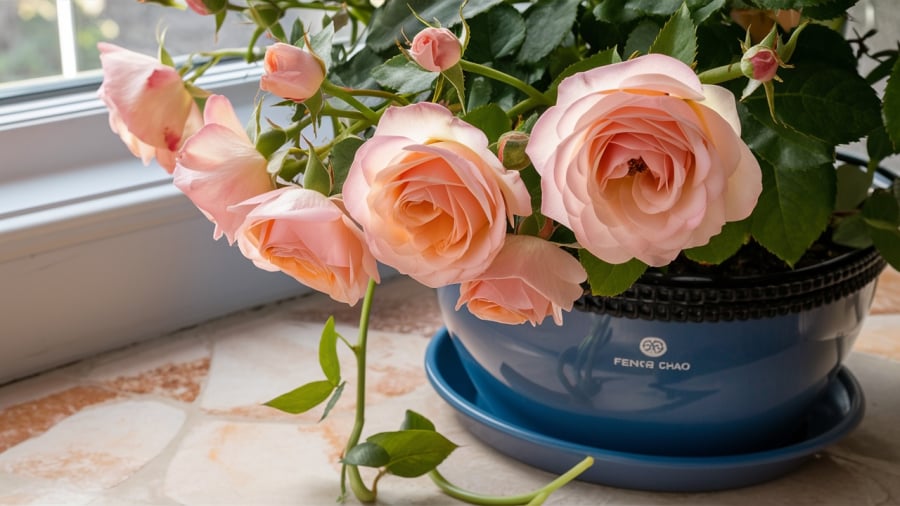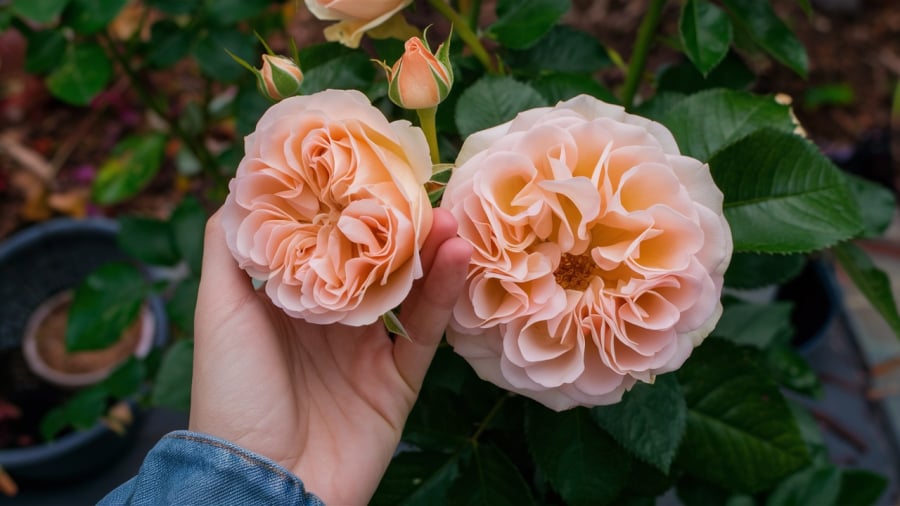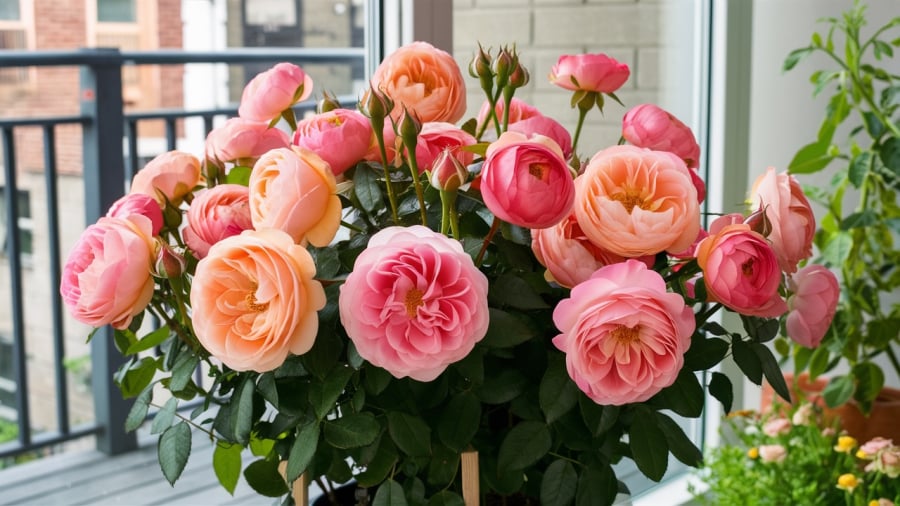Roses have held a special place in the hearts of many flower enthusiasts, thanks to their captivating beauty and delicate fragrance, exuding a strong allure for any space. To maintain the vibrancy of roses all year round, it’s essential to ensure sufficient light, proper pruning techniques, and choose the right fertilizer.
Devoted rose enthusiasts, through years of dedicated gardening, have discovered two special fertilizers that this flower adores. One type focuses on supporting the healthy growth of the plant, while the other primarily helps the flowers bloom more vibrantly and vigorously.

Roses have long captivated the hearts of many flower lovers
Nitrogen Fertilizer: The Key to Robust Rose Growth
For roses to thrive and produce lush, green foliage, nitrogen fertilizer is indispensable. Nitrogen-rich fertilizer provides essential nutrients for the plant’s growth, promoting leaf photosynthesis and a stronger root system.
During the growth phase, roses have an increased demand for fertilizer, especially in spring, when the plant awakens from its dormant state. Applying nitrogen fertilizer is crucial to help the rose regain its vigor and flourish.
You can opt for complex fertilizers with a high nitrogen content or directly use granular nitrogen fertilizer, spreading it around the rose’s roots. Proper watering after fertilization is necessary to help the nutrients permeate the soil, allowing the rose to absorb them effectively.
Pay close attention to the amount of nitrogen fertilizer used. Excessive nitrogen can result in lengthy but sparse branches without blooms. Therefore, precise dosing ensures balanced rose growth.
Fertilizing every 2-3 weeks is ideal, catering to the rose’s growth needs. If you notice darker green leaves and vigorous branch development after fertilizing, your rose is thriving.

Fertilizing every 2-3 weeks meets the rose’s growth requirements.
The Role of Phosphorus and Potassium Fertilizers for Roses
While nitrogen fertilizer contributes to robust rose branches and leaves, phosphorus and potassium fertilizers play a pivotal role in promoting continuous blooming. Phosphorus and potassium are essential for flower formation. Specifically, phosphorus supports flower bud differentiation and increases flower numbers, while potassium enhances flower color intensity and prolongs blooming.
Before the roses bloom, increase the frequency of phosphorus and potassium fertilizer applications. Applying these fertilizers before and after each bloom is highly effective in stimulating new flower buds and extending the plant’s blooming period. As a result, your rose will not only produce more flowers but also exhibit vibrant vitality and brighter colors.
One of the favored phosphorus and potassium fertilizers is potassium dihydrogen phosphate. When using this fertilizer for roses, you can easily dissolve it in water at the appropriate ratio and then spray it directly onto the leaves or water it into the soil. This method ensures quick nutrient absorption, effectively stimulating flowering.
Summer and autumn are the ideal seasons for roses to flourish. During these periods, frequent applications of phosphorus and potassium fertilizers are necessary to ensure the desired quantity and quality of blooms. After each fertilization, caregivers will notice more vibrant and radiant flower colors. The blooming pots will bring a sense of comfort and pleasure to anyone who beholds them.

Summer and autumn are the prime seasons for roses to flourish.
Guidelines for Fertilizing Roses
While nitrogen, phosphorus, and potassium fertilizers are crucial for rose growth, combining them sensibly according to the plant’s growth stages is essential. In spring, as roses enter a vigorous growth period, focus on using nitrogen fertilizer with a small amount of phosphorus and potassium. In contrast, during summer and autumn, when the plant needs more nutrients for flowering, increase the phosphorus and potassium content while reducing the nitrogen level.
When fertilizing, consider not only the type and ratio of fertilizers but also the timing and method. The ideal time to fertilize is early morning or late afternoon when cooler temperatures facilitate better nutrient absorption. This care ensures your roses grow robustly and bloom brilliantly.
After fertilizing, place the plant in a shaded area to protect it from direct sunlight, which can cause stress and hinder nutrient absorption. Additionally, water management is critical. Water reasonably after fertilizing to allow nutrients to penetrate the soil, creating optimal conditions for the rose’s root system to absorb them effectively.
During the rose’s dormant period, consider reducing or discontinuing fertilization. This period offers the plant a well-deserved rest and adjustment after a vigorous growing season. Over-fertilization can lead to nutrient excess, negatively impacting the rose’s development and blooming capacity in the following year.






































